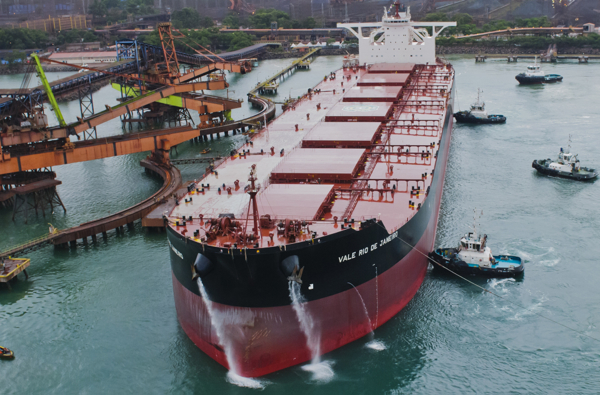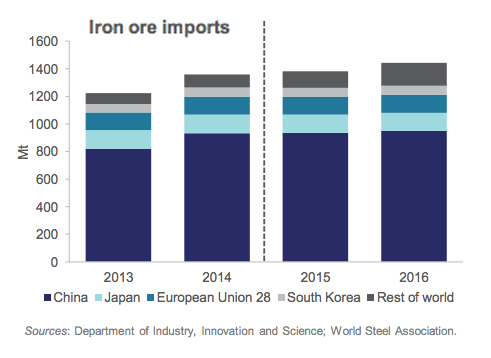Iron ore price drops back below $40

Vale’s giant iron ore carriers are the world’s largest dry bulk vessels capable of carrying 400,000 dead weight tonnes
The price of iron ore fell below the $40 a tonne level on Wednesday with the Northern China 62% Fe import price including freight and insurance (CFR) declining 1.8% to $39.30.
The steelmaking raw material has fallen 8.4% in value so far in 2016 after a near 40% decline in 2014. The price hit a near decade low a month ago of $37 and today’s price compares to the record high of $190 a tonne hit February 2011 and an average of $55 last year.
Chinese iron ore imports surged 17% in December from the previous month to 96.3 million tonnes. Cargoes for the whole of 2015 also set a new record, up 2.2% to 952.7 million tonnes compared to 2014.
Many smaller producers have exited the market and others are “hanging on by their fingernails,” but domestic Chinese producers which struggle with low grades and high production costs have been most affected.
Many Chinese mines are staying open only because of support from local governments pressured to keep jobs safe. The country’s miners produced some 350 million – 400 million tonnes a year on a 62% Fe-basis in 2014, although reliable stats are lacking (this figure is calculated working backwards from pig iron production).
Ralph Leszczynski, head of research at Genoa-based shipbroker Banchero Costa & Co quoted in a Bloomberg report estimates that domestic Chinese output fell 8% last year:
“China can get iron ore from Australia and Brazil so cheaply that there’s less need for domestic supplies. The ridiculously cheap iron ore and freight rates have allowed mills to keep producing steel and flood international markets.”
Freight rates recently fell to record lows and the Australia–China route adds less than $5 a tonne to the price, while from Brazil shipping costs for iron ore are below $10 a tonne. Chinese steel exports have nearly doubled over the past two years, hitting 112 million tonnes in 2015.
Australia’s Dept of Industry in its December report estimated global trade in iron ore increased by 1.8% in 2015 to 1.4 billion tonnes, the lowest rate of growth since 2001. In 2016, world trade in iron ore is forecast to increase by a further 4.5% with increasing supply from Brazil and Australia and an increase in consumption of seaborne iron ore from China due to a fall in domestic production.

Source: Australia Dept of Industry
{{ commodity.name }}
{{ post.title }}
{{ post.date }}

Comments
Stephen
This doesn’t seem surprising under such an economic circumstance.